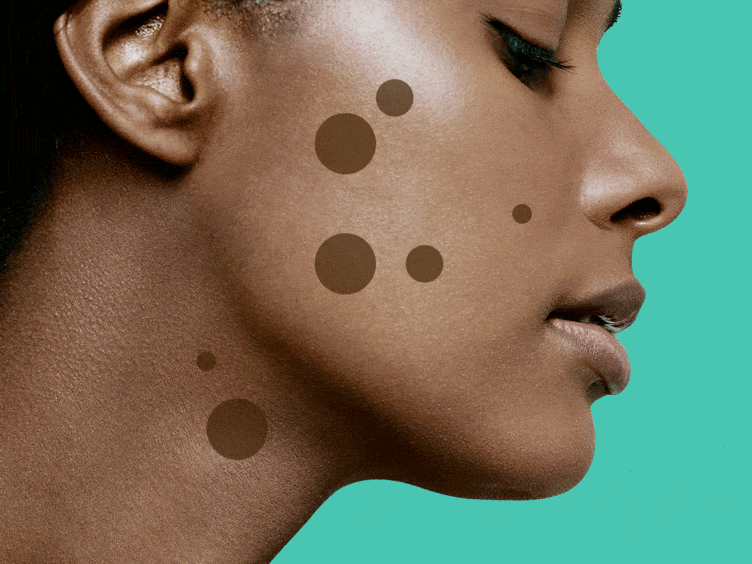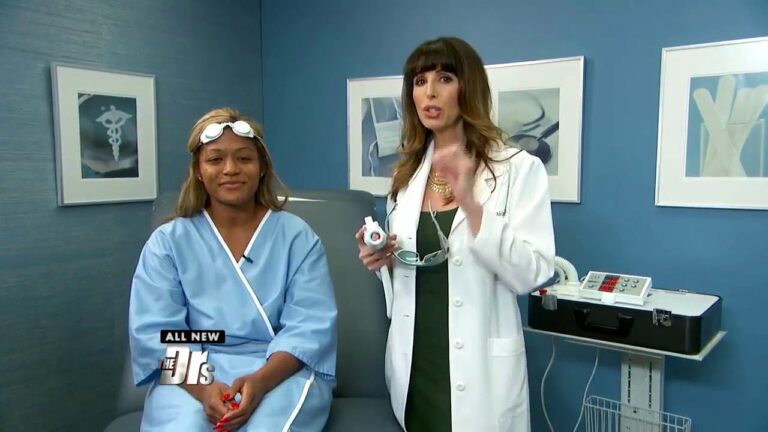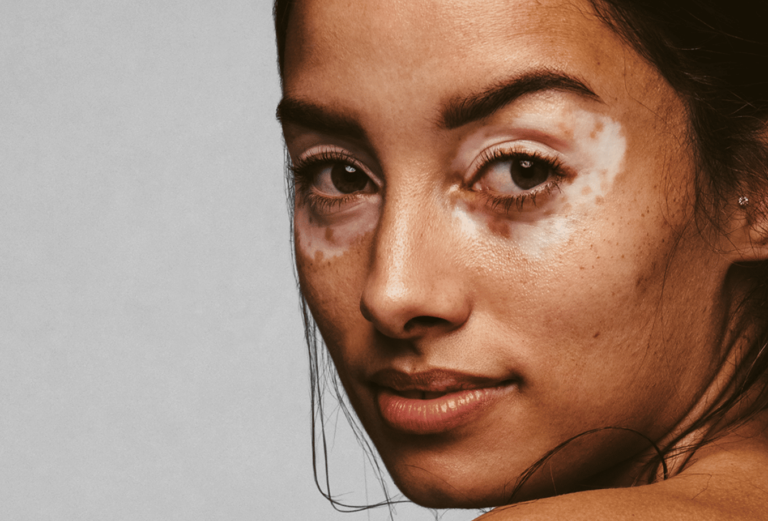Get a handle on hyperpigmentation. As Published on Self.com by Janell M. Hickman.
“Ask your dermatologist or laser technician if the laser they’re using treats at a rapid rate with a focused beam, like the The Lightpod Neo laser by Aerolase. This type of laser will help avoid an inflammatory response, burns, or collateral damage, according to Cook-Bolden.”
As a beauty editor, my ultimate quest is to achieve flawless skin. You know, the I-don’t-even-need-any-makeup type of complexion we all desire. But I’m not quite there yet. The number one thing keeping me from my no-makeup goal? Dark spots. Uneven skin tone keeps me reaching for my makeup bag again and again. I talked to a few dermatologists to find out if there are ways to get rid of discoloration for good.
“Dark spots or hyperpigmentation are due to the overproduction of melanin in the skin by melanocytes,” explains plastic surgeon Melissa Doft, M.D. This extra melanin can be triggered by a lot of different things. “Hormones—both estrogen and progesterone—can increase the level of melanin (why pregnant women see dark spots that often lighten following birth); the sun can increase the level of melanin (why we have more dark spots after the summer); and age can increase the size of the melanocytes (why we see dark age spots in older patients),” says Doft. Other factors, like skin irritation as a result of acne, waxing, and harsh scrubs, can also cause dark spots.
While we can’t promise that you can banish an uneven complexion for good, we did tap a few experts to find the best treatments for hyperpigmentation.
1. Sunscreen
You’ve heard it a million times—sunscreen is no longer considered a nice to have; it’s a 100 percent must-have for 365 days of the year. “Dark spots will get darker with sun exposure,” says board-certified dermatologist and founder of DermWarehouse Alan J. Parks, M.D. “Sunscreens, and particularly physical sunblocks that have either zinc oxide or titanium dioxide, can block out most of the rays that will darken the dark spots.”
For true protection you need to use a broad spectrum sunscreen to guard against UVA and UVB rays. “Reapplication of your sunscreen every two hours—even if it is labeled all day, 24-hour, waterproof, etc.—is necessary,” says dermatologist, cosmetic surgeon, and director of Skin Specialty Dermatology Fran E. Cook-Bolden, M.D. She also advises sun avoidance in general—especially for sensitive areas—between 10 A.M. and 4 P.M. Even visible light can increase skin pigmentation. If you’re out when the sun is highest, seek cool, shaded areas or wear UPF clothing, which blocks out sun.
Editor’s pick: COOLA Mineral Face SPF 30 Matte Cucumber ($36, ulta.com)
How to use it: Daily, with reapplication every two hours if in direct sunlight.
2. Vitamin C
Think beyond orange juice: Vitamin C can be used as a topical antioxidant that helps to block free radicals from causing oxidative damage to the skin (which can lead to wrinkles and a dull complexion, among other things). “It also inhibits enzymatic processes that produce melanin in the skin, as such it can help to reduce dark coloration of the skin,” says Sumayah Jamal, M.D., of Schweiger Dermatology Group. According to Cook-Bolden, another added benefit is that vitamin C doesn’t lighten “normal” skin but instead targets problem pigmentation areas.
Editor’s pick: Isdinceutics Melaclear Serum ($75, isdin.com)
How to use it: Five drops daily massaged on cleansed skin, preferably before applying sunscreen in the A.M.
3. Hydroquinone
When discussing the treatment of dark spots, hydroquinone has been the gold standard for over 50 years. You can find this ingredient over the counter in concentrations of 2 percent or less, whereas the prescription has 4 percent or greater. On a biological level, hydroquinone works by inhibiting an enzyme called tyrosinase, which aids in the production of melanin, explains Cook-Bolden. Naturally, the less tyrosinase produced, the less melanin produced.
In some cases, the effects of hydroquinone can be seen in as little as two weeks. However most should anticipate 8 to 12 weeks of use to see a visible difference depending on a few factors (think, the extent of the hyperpigmentation, how deeply it penetrates, how long it’s been there, etc.).
“As with any product that is applied to the skin, hydroquinone can cause dryness, redness, and burning, which may signal an allergic reaction to the ingredient,” cautions Cook-Bolden, who always recommends trying a spot test first. Another potential side effect is “ghosting,” which is the inadvertent lightening of the skin outside of the targeted area. To avoid this, apply hydroquinone sparingly to the center of your spot and feather toward the edges.
Editor’s pick: Ambi Skincare Fade Cream ($7, walgreens.com)
How to use it: Best applied at night to start, and eventually increased to twice daily for maximum effects. During the day, pair with sunscreen as the ingredient can cause sun sensitivity.
4. Kojic Acid
Kojic acid (derived from mushrooms or fermented rice) is commonly used in skin lighteners, and best used in conjunction with hydroquinone for maximum results. “It works by suppressing a key factor in the activity of the pigment cells,” says dermatologist and founder of Derma di Colore Carlos Charles, M.D. “The risk commonly associated with topical kojic acid is allergic dermatitis, and that is why it is primarily found in relatively low concentrations.” Those with sensitive skin should opt for small doses during nighttime only since inflammation and irritation can be side effects. Also, don’t expect speedy results—it can take several months to see improvement of hyperpigmentation with the use of topical kojic acid.
Editor’s pick: Arcona Brightening Drops ($44, arcona.com)
How to use it: Nighttime only to dark spots or areas of concern only.
5. Lasers
Lasers are the most expensive, yet most impactful treatment to reduce dark spots. “These use a focused beam of light that has a specific target or chromophore (pigment) to break up and eliminate the pigment particles in the skin,” explains Cook-Bolden. “IPL (intense pulsed light) can treat unwanted pigmentation. However, it delivers less focused light and may have an unwanted effect on the surrounding skin, especially in darker or tanned skin.”
The ideal laser treatment for hyperpigmentation will provide a cooling blast (or at least limit the amount of heat generated). Ask your dermatologist or laser technician if the laser they’re using treats at a rapid rate with a focused beam, like the The Lightpod Neo laser by Aerolase. This type of laser will help avoid an inflammatory response, burns, or collateral damage, according to Cook-Bolden.
Cost: $250-$2,500
Derm tip: Anticipate 1-6 treatments (possibly more) every 3-4 weeks, in-office only.
6. Chemical Peels
Exfoliating treatments like chemical peels remove the upper layers of dead skin helping to reduce the dull appearance of the skin so that it reflects light better and appears to glow, explains Jamal. “Over time, these treatments can stimulate collagen production, enhance cellular turnover, and reduce the appearance of dark spots,” he says, but beware a chemical peel that is too powerful, which can burn the skin. Common active ingredients in pro-grade peels include glycolic, mandelic, salicylic, and lactic acids, along with trichloroacetic acid. Jamal adds that while at-home peels are available, they are more likely to slough off dead skin rather than lighten dark spots.
Cost: $100-$1,000
Derm tip: Typically 3 to 6 treatments (possibly more) every 3-4 weeks is needed to see results. Note: Deeper peels have greater risks but may only require 1-2 treatments.
7. Microdermabrasion
Microdermabrasion is another well-known exfoliating treatment for hyperpigmentation that uses tiny particles to sand away dead skin. Cook-Bolden describes microdermabrasion as a “non-chemical procedure that’s non-ablative, which means it does not destroy skin tissue, and therefore does not require significant recovery time.” Microdermabrasion is best for milder hyperpigmentation conditions, since the results are modest in terms of improving the appearance of skin discoloration.
Cost: $100-$600
Derm tip: Usually dermatologists recommend 3 to 6 treatments (possibly more) every 2-4 weeks.
8. Microneedling
Consider this a treatment not for the faint of heart. Performed using a medical-grade, stainless steel roller covered with hundreds of tiny spikes, the tool creates a series of micro-injuries in effort to rebuild the skin collagen production along with elasticity. While many at-home versions exist, Doft recommends having your physician control the level of penetration—think half a millimeter to 2.5 millimeters.
For best results, microneedling is often combined with topical treatments. “Once the skin barrier is opened, it is also possible to infuse ingredients known to lighten the skin like vitamin C,” says Doft. Dermatologists might also use platelet-rich plasma (PRP), a special wound healing serum, or a hyaluronic acid-vitamin C compound to help with hyperpigmentation, especially in darker skin tones. She does note there is a potential risk of scarring from microneedling services if they are performed too aggressively. “Darker skinned patients may also find that they become more pigmented,” she adds. “But [when done correctly] you will see a brighter complexion by the next week after treatment.”
Cost: $300-$1,750
Derm tip: Expect to do three treatments (possibly more) every 6 weeks with a dermatologist.



